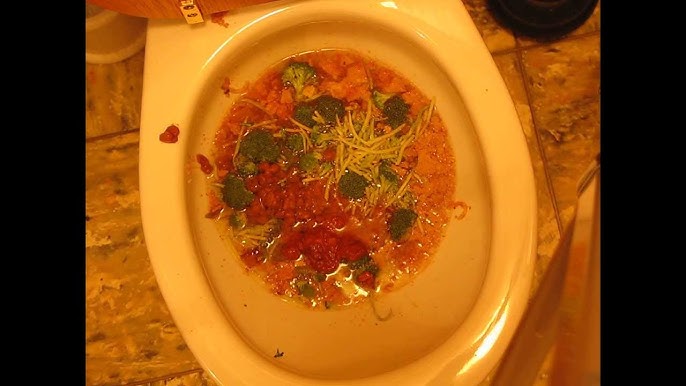Can You to Flush Food in the Toilet?
Can You to Flush Food in the Toilet?
Blog Article
Are you searching for know-how around What Can Happen If You Flush Food Down the Toilet??

Intro
Many people are frequently faced with the problem of what to do with food waste, particularly when it involves leftovers or scraps. One typical question that emerges is whether it's alright to purge food down the toilet. In this article, we'll look into the reasons individuals might take into consideration flushing food, the consequences of doing so, and alternative approaches for correct disposal.
Reasons why individuals might consider purging food
Lack of understanding
Some individuals might not be aware of the possible damage caused by purging food down the toilet. They might incorrectly think that it's a harmless practice.
Benefit
Purging food down the bathroom might seem like a fast and simple solution to taking care of undesirable scraps, specifically when there's no neighboring trash can offered.
Idleness
In many cases, people may just choose to flush food out of large negligence, without considering the effects of their actions.
Consequences of flushing food down the bathroom
Environmental impact
Food waste that ends up in waterways can add to pollution and harm water ecological communities. Additionally, the water used to purge food can stress water resources.
Plumbing issues
Flushing food can result in blocked pipelines and drains pipes, creating pricey pipes fixings and troubles.
Kinds of food that ought to not be purged
Coarse foods
Foods with fibrous textures such as celery or corn husks can obtain entangled in pipelines and trigger clogs.
Starchy foods
Starchy foods like pasta and rice can soak up water and swell, causing blockages in pipelines.
Oils and fats
Greasy foods like bacon or cooking oils need to never be purged down the toilet as they can strengthen and cause clogs.
Appropriate disposal methods for food waste
Utilizing a garbage disposal
For homes equipped with waste disposal unit, food scraps can be ground up and flushed with the plumbing system. Nonetheless, not all foods appropriate for disposal in this way.
Recycling
Certain food product packaging materials can be recycled, decreasing waste and lessening environmental effect.
Composting
Composting is an environmentally friendly way to take care of food waste. Organic materials can be composted and used to enhance soil for gardening.
The importance of correct waste monitoring
Lowering environmental harm
Appropriate waste monitoring methods, such as composting and recycling, aid decrease contamination and maintain natural deposits for future generations.
Shielding pipes systems
By avoiding the practice of flushing food down the bathroom, home owners can avoid costly pipes repairs and preserve the honesty of their pipes systems.
Conclusion
In conclusion, while it may be appealing to flush food down the toilet for ease, it is very important to comprehend the potential effects of this action. By adopting appropriate waste monitoring methods and getting rid of food waste responsibly, individuals can contribute to much healthier pipes systems and a cleaner setting for all.
FLUSH FOOD DOWN THE TOILET?
FLUSHING FOOD CAN CAUSE BLOCKED DRAINS IN YOUR HOME
All of the plumbing fixtures in your home are connected to the same sewer pipe outside of your home. This outdoor sewer pipe is responsible for transporting all the wastewater from your home to the Council sewer mains. Even small pieces of food that go down the kitchen sink can cause problems for your sewer. It should therefore be obvious that flushing larger bits of food, such as meat, risks a clog in either the toilet itself or the sewer pipes. Flushing greasy food is even more problematic because oil coagulates when it cools, coating the interior lining of your pipes.
THE TOILET IS NOT A BIN
Food isn’t the only thing that people shouldn’t be flushing down the toilet. People use the toilet to dispose of all kinds of things such as tampons, makeup wipes, dental floss, kitty litter and even underwear. Water goes to great lengths to educate residents about the high costs and stress placed on wastewater treatment systems simply from people flushing the wrong stuff down the toilet. It costs taxpayers millions of dollars each year, and homeowners thousands in blocked drain repairs.
FLUSHING FOOD IS A WASTE OF WATER
Flushing food is a waste of our most precious resource - water. In June this year Level 1 water restrictions were introduced to protect water supply from drought conditions. Much of New South Wales continues to be affected by prolonged drought with recent figures revealing up to 97 per cent of the state remains in drought. Depending on whether you have a single or dual flush toilet, every single flush uses between five and 11 litres of water. In the current climate this is a huge amount of water to be wasting on flushing food that should be placed in the bin (or better yet, the compost).
https://www.jabplumbingsolutions.com.au/blog/can-you-flush-food-down-the-toilet

Do you really like reading up on Flushing Food Down the Toilet?? Leave a remark directly below. We will be pleased to find out your responses about this blog. Hoping that you come back again in the future. Enjoyed reading our blog? Please share it. Let someone else check it out. Kudos for being here. Don't hesitate to check our blog back soon.
Get A Free Estimate Report this page